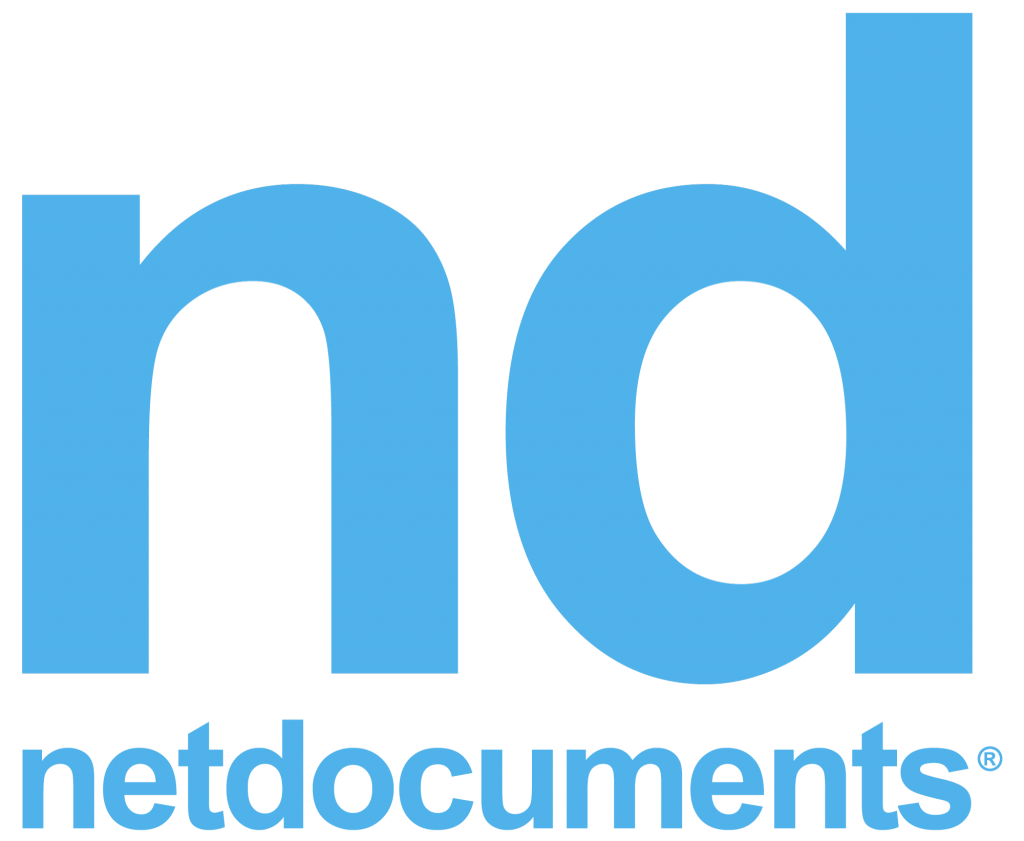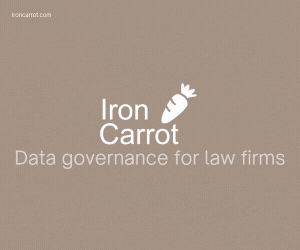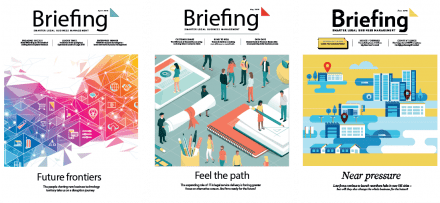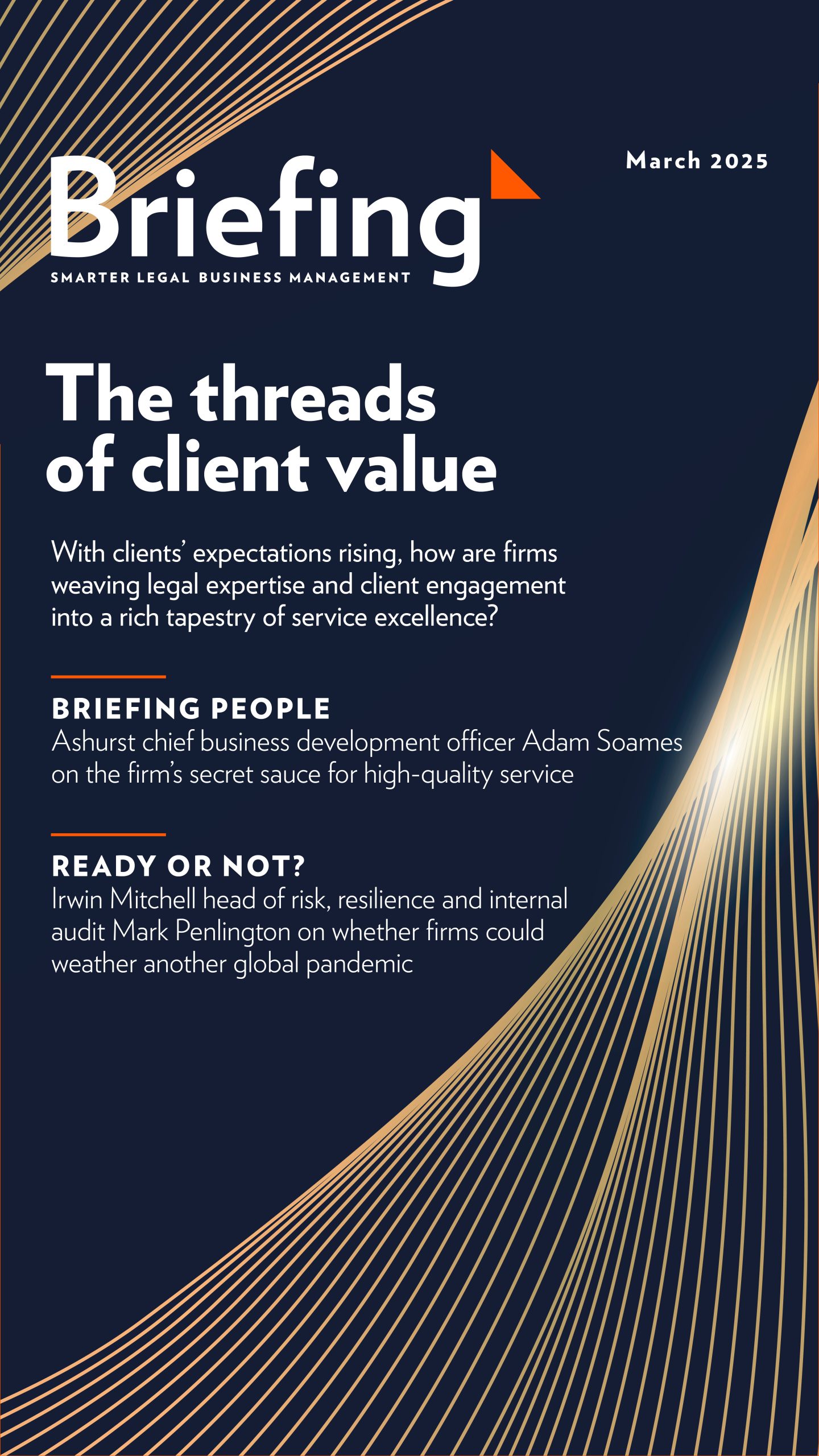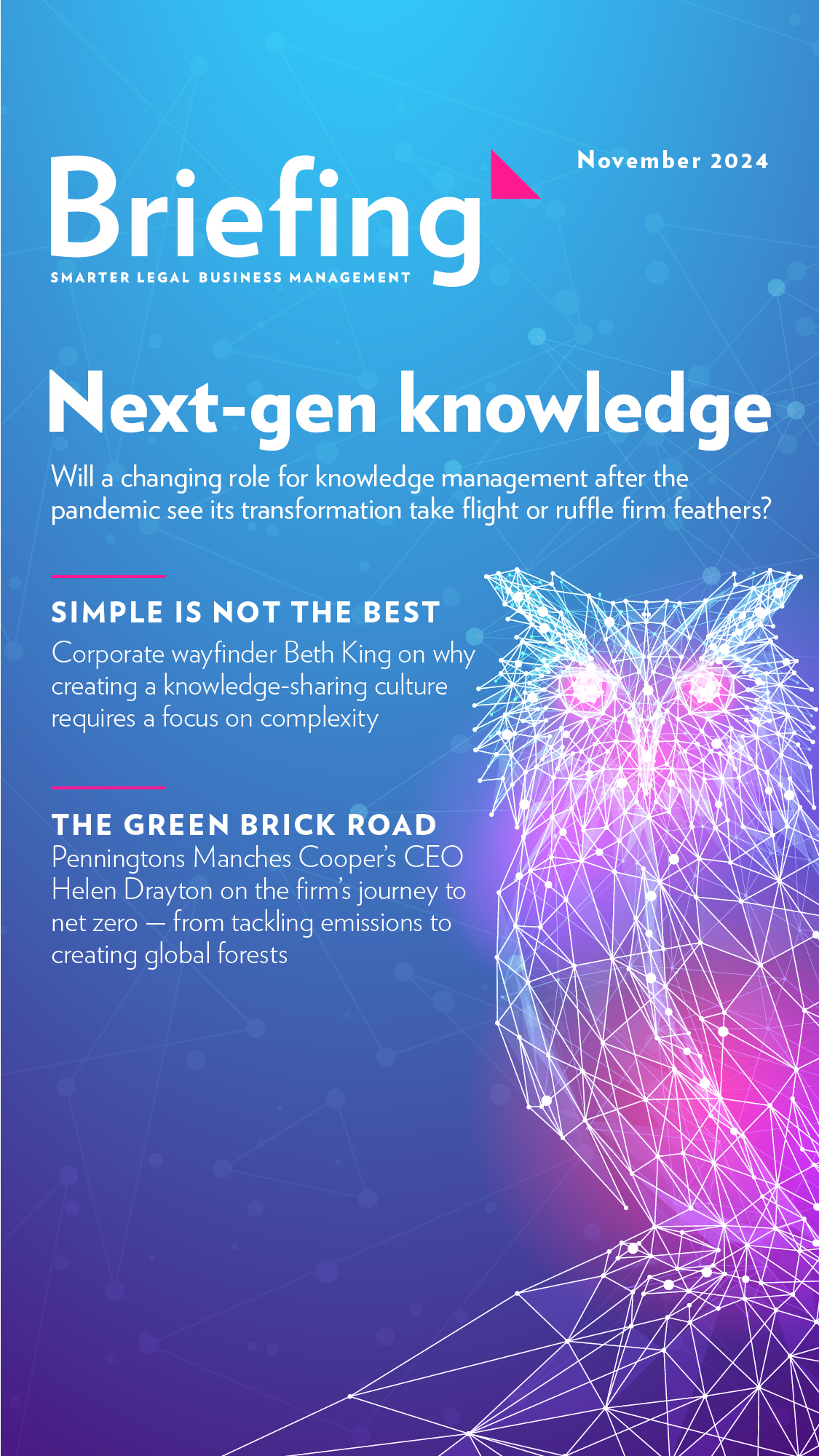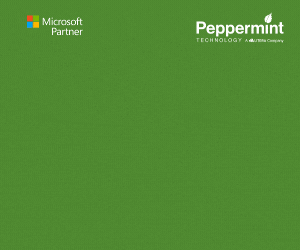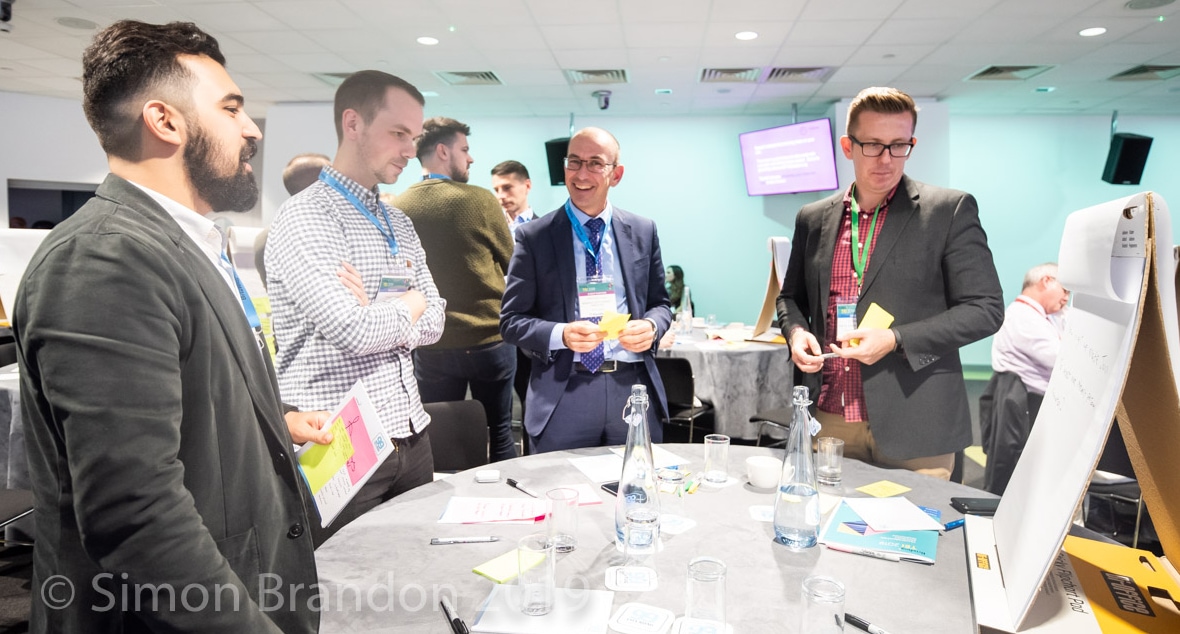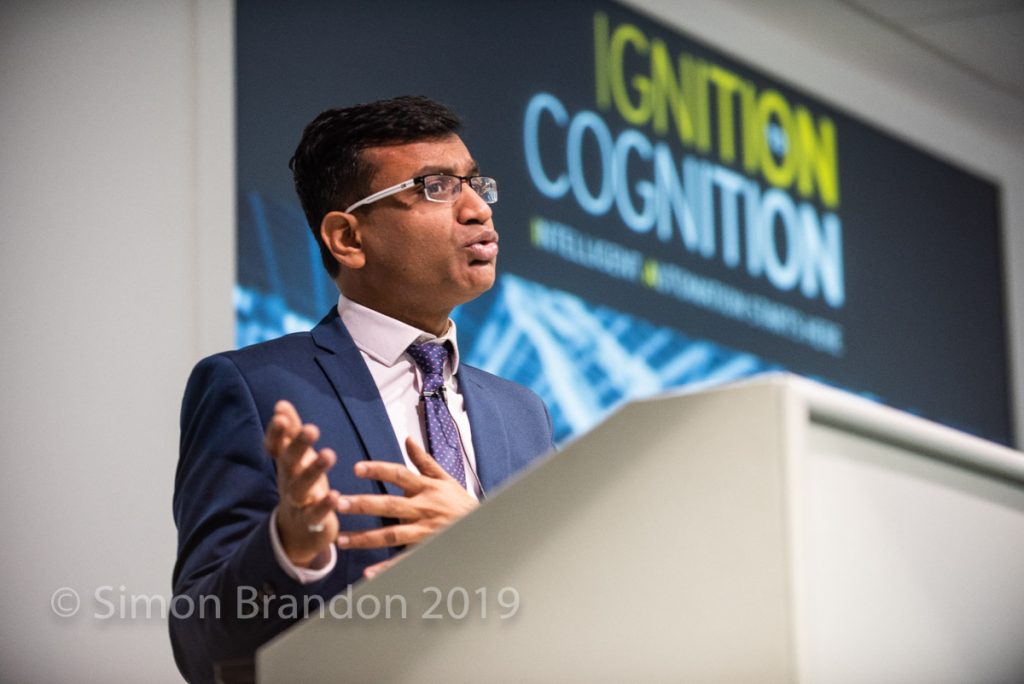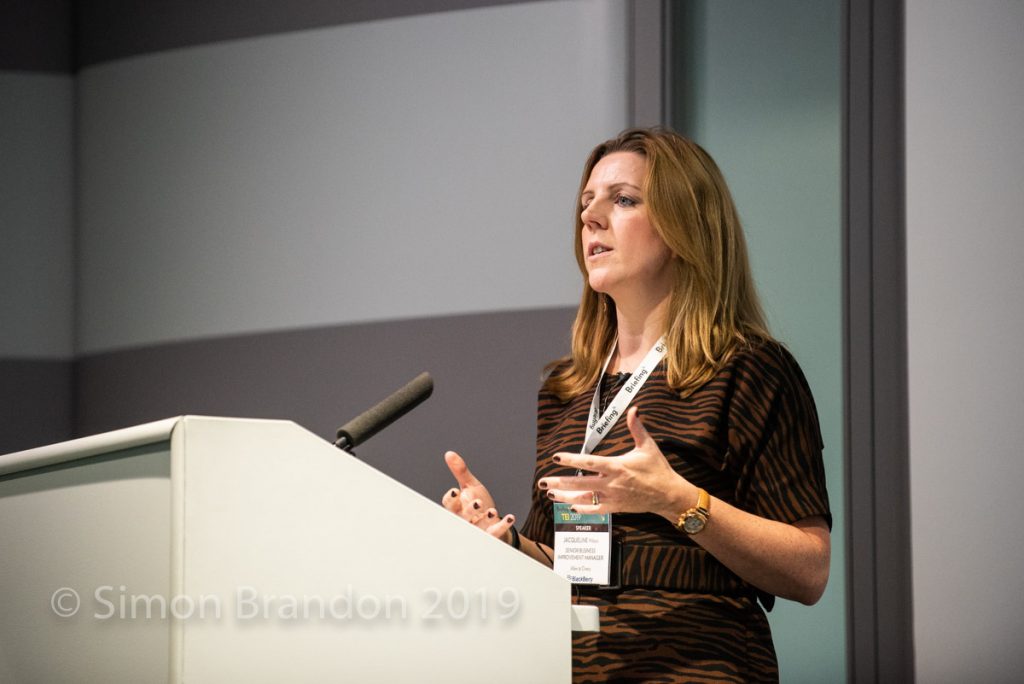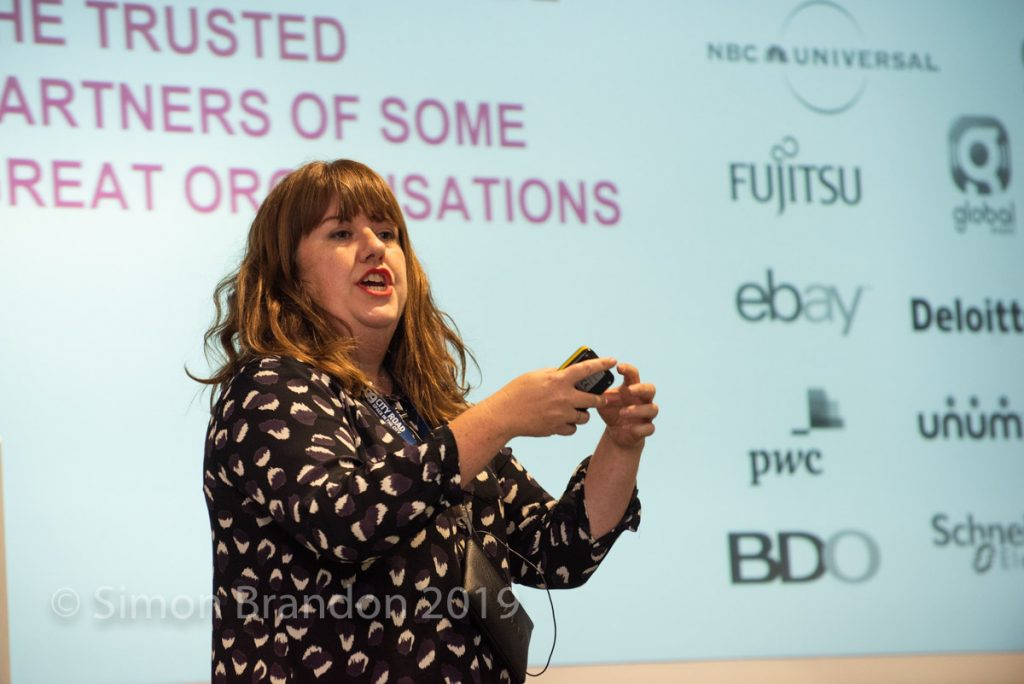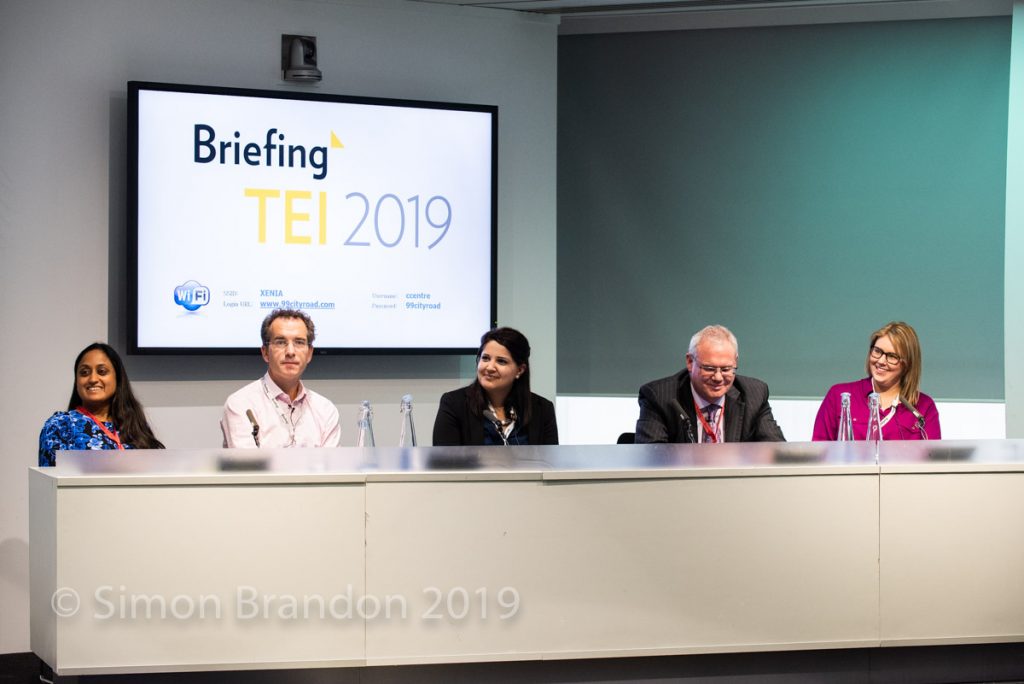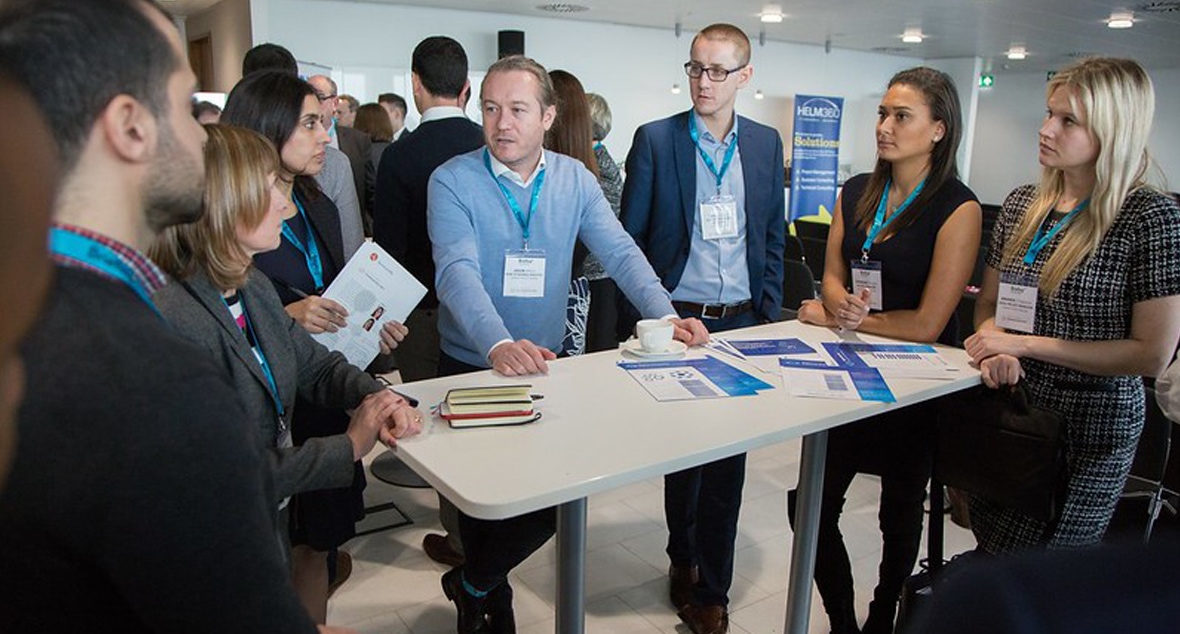Leadership insights: BURN YOUR RULE BOOKS, WITH NETDOCUMENTS
Gareth Ash, chief operating officer|Hogan Lovells
VIRTUAL EVENT PARTNER
Briefing editor-in-chief Richard Brent was joined by Gareth Ash, CIO of Hogan Lovells, for a Q&A covering the rapid response of legal business to a pandemic, the shape of things that may now emerge, and what the implications are for firms’ many strategic technology choices. In truth, there has been no playbook to follow as this situation has unfolded, but key areas of focus have included ensuring much hard work put in to finetuning collaborative working approaches over the years can continue; how best to support a remote workforce in terms of productivity and wellbeing; the pressures on information security; and whether there is still room on the agenda to innovate for clients.
The pandemic arrived as Hogan Lovells was in the process of rolling out NetDocuments as its document management system of choice, and Gareth also gives a detailed update on the status of this project and its strategic significance within a forward-looking, flexible and unified IT ecosystem.
Webinar time: 1 hour. Take a look at the YouTube page for specific timestamps, so you can find content more easily.
EDITOR’S LETTER – MAY
When we carried out our annual Legal IT landscapes research in November/December 2019, the section on agile working and hotdesking made for some slightly puzzling reading. We’ve long tracked how firms are doing in terms of having ‘significantly’ (over 10%) more employees than desks in the office for them all – and have generally found increased appetite for the arrangement year after year. More firm leaders say they are already doing it; and of those that aren’t, more expect to get there sooner than said as much the year before.
Nothing very surprising there – office space is expensive, so it’s good if you don’t need to fill quite so much of it up with boring desks. You may simply need less space – or you might want to get more creative with those break-out spaces and client-facing areas instead. And after all, people quite like to work from home, right? When they really need to get their heads down. Or when it suits to have some flexibility to discharge other responsibilities or do other things. Or on Friday.
But last year, quite a surprise: a higher proportion than the year before said no, they would ‘never’ in fact go there (the desk reduction) and three-quarters felt they might just reach that 10% mark in between five and 10 years’ time.
I can accept that some of the people businesses want to retain may simply like having a desk (some, maybe even an office) to call their own – but looked at in light of what legal has had to make happen by hook or by crook in a few weeks, that’s pretty staggering. I do wonder if folks will ever be able to sigh and say ‘fear of change’ at a conference in quite the same way again …
As it happens, this issue was planned to focus on how far agile (or ‘smart’) working had come long before lockdown began to loom. Perhaps it’s unreasonable to expect people to believe that now – but read on for plenty of insight into what was top of mind for those managing this working transition in 2020 like no other (p15). Some, though by no means all, of this naturally involves choices about technology (and see much more on that theme from p29). Certainly, firms that have carefully invested in systems to help their people be more efficient, productive and collaborative over the years should be in a somewhat better place to meet this latest challenge.
What next for knowledge and innovation?
Having expended all that energy fusing their functional silos over the years (a fairly constant theme for us since Briefing began publishing a decade ago), law firms will surely be keen to ensure this doesn’t entirely unravel in the exceptionally uncertain environment facing us today. As we know though, engagement/management of all project stakeholders is a fine art for firms at the best of times. What will become of it in the worst?
This was just one question-mark hovering at a virtual roundtable we were pleased to co-host recently with iManage – following a spotlight focus on KM strategy and case studies, Knowledge Learnings, published in March this year.
Let’s take KM and that newest kid on the smarter-business-management block – innovation. Although many firms integrate their respective destinations (and some don’t separate them at all), it was pointed out by one knowledge leader that you could see potential for strain even before something as potentially seismic to organisational fabric as a lockdown. Those innovation people can err on the side of seeking to “rush things through”, perhaps neglecting some long-honed KM principles in the process, it was said. They conceded, however, the other side may well counter with a charge of “slow and cumbersome” on KM’s part; perhaps even simply unaccepting of ‘the new’.
To steal what I found to be one individual’s most excellent image of market-leading energies at work – could the Wile E. Coyote of innovation be in danger of chasing the Road Runner of glorious profile off the cliff edge?
And naturally, nobody wants to be perceived as “old hat”, while the new joiner is grabbing irritating headlines playing with the cool stuff.
“It has been a source of conflict, and everyone has at times felt the strain,” it was said, with some admirable frankness. Or, to be a bit more glass-half-full about it; there’s a definite appetite for working better together in future.
Other challenges voiced included some jurisdictions being more conservative than others; team members in this mix who inevitably have less experience of the legal market; feelings about that so-called ‘shiny object syndrome’ of trying to plaster tech onto anything and everything; and of course budgets. And out of all of this, instead of the sense that “knowledge is power” for organisations at the end of the day, do we perhaps risk fuelling a retreat to a “narrower definition of knowledge” in the 2020s, wondered one? Such a move to isolation would be regrettable.
If that all sounds a bit shaky, we heard there are at least some people in our midst with one foot in each camp helping to reinforce bridges – bringing the right people together and doing some “translating” to get them on the same page: “We try to ensure both sides are asking the right questions of each other to get what they both want out.”
Will that be enough to address the question raised of initiative ‘ownership’ – of the KM precedent, say, but then also the tool that’s now automating it? Are they one and the same person? Should they be?
One firm has ditched the innovation title/label altogether, finding it ultimately unhelpful (and it’s not the first time we’ve heard that). One challenge can be that, since firms have opened that box up, everybody now wants to be one of the chosen ones to innovate – but the business needs “best bang for the buck”. And we can’t see that particular driver slowing down any time soon.
A sure-fire way of not achieving KM/innovation ROI, however, is bringing a new tool in for an individual ‘problem’; then finding, after a burst of initial hype-phase excitement, it’s barely used. One even pointed out that as suppliers introduce well-marketed improvements to their products, you can risk a “second spike” in that infectious enthusiasm!
What other difficulties did people anticipate for the balance of 2020? Well, collaboration tools might be an obvious win for all to get things done as ‘new normal’ slowly materialises (Zoom fatigue or no). But it was suggested we may sadly see a new fear of tech rearing its head to meet us in the months ahead – not overall wariness of change so much as fear of anything, frankly, that saves too many hours of your day – or passes control of work to someone else. It might have had the best efficiency business case last year, but everyone on the floor will now want to be heads-down ‘busy’. Unless a client simply insists on X innovation streamlining a delivery, could it just be left to quietly fall through the cracks?
More positively, we heard some partners are at least suddenly seeing duplicated effort that could be tackled with some of those AI investments of recent years.
On the client-side, then, there’s also likely to be pressure to provide more value-add, rather than paid-for, extras. And on Covid-19 specifically, there’s avoiding over-communicating that same urgent update in the same way as every other firm on the panel. People will need to be having purposefully better conversations about what their clients really need to hear from them – and KM is positioned to help with the framing of those exercises, as well as the content and work delivery that ensues.
Finally, it’s worth pointing out some in this area do see at least a bit of upside in having a little more headroom right now. There’s the opportunity, for example, to explore improving integration of existing systems (not least of course, with collaboration tools), of data, or indeed of business units and recent acquisitions. In one case, professional support lawyers, even lawyers themselves, have time to wade into a new document management system project with some helpful data cleansing – which is a pretty key ingredient of future process improvement. And the case for achieving a ‘single source of truth’ has certainly grown now everyone’s after it from home.
When we covered this area back in early March, we put it out there that an even brighter future in which UK firms’ KM and innovation teams might manage to collaborate more could be a world of new ‘analytical KM’ – giving clients greater insight into patterns in work completed to reach better business decisions in general. The perspective of iManage is that’s a stream of activity that has found most momentum in the US legal market, while the UK has tended to follow a somewhat more ‘traditional’ approach to generating process or knowhow knowledge. But that was, of course, before the future of all our workloads became a whole lot harder for anyone to predict with confidence.
First for change
Richard Brent, editor-in-chief|Briefing
Suzanne Liversidge, the first global managing partner to pick up the baton for Kennedys, talks to Richard Brent about modern leading, listening well, and leveraging firm values.
What had changed that meant your firm needed the new role of global managing partner from 2019 onwards?
We’ve seen significant international growth, in the last five years in particular. We have a great long-term senior partner in Nick Thomas, but the scale and scope of our business are such that they exceed the capability of any one person. It was agreed we would therefore bring in the managing partner role. There wasn’t an election process. I was invited, having been on the board for some time already in a wider global operations and business services role. So it made sense. I don’t undertake legal work anymore, but I have kept my key client role as it helps me stay close to the market. Standing in other people’s shoes is very much a motto of mine – it’s the way you’ll make better decisions.
What was your top priority area or two to tackle?
To stand in more shoes! Although I had touched parts of the global business, I had to do a lot of active listening. When you start any new role, I think you need to listen carefully, both internally and externally. That helps you to identify opportunities and ways of doing things differently. And we’re also very light on our feet – always very active in merger, acquisition and lateral talks – so a lot of time is spent on the strategy around that.
How would you describe your personal leadership style?
I’m not naturally a very hierarchical person. I’m passionate about modern leadership – connecting people, as opposed to ‘command and control’. We all have a job to do, varied and different roles, and the way we execute and collaborate is a critical element of a successful business. I also give a number of talks around the place about being your authentic self at work. I’m such a bad liar myself – if I try fakery, I’ll have forgotten what I’ve just told you! It’s so much easier to be the real you – and it’s easier to trust that. I’ve been talking about that for 20 years or so, as I hope it’s been a key part of my management style – authentic with a good sense of humour. I was the first female president of the Chamber of Commerce in Sheffield. There hadn’t been one for the first 242 years of its existence, so I had no choice but to be authentic.
And what about your role in the firm’s R&D-focused work such as the innovation toolkit and, most recently, Kennedys IQ?
I’m not the most highly technical individual, but I sit on the R&D board in a role focused on identifying and resolving clients’ problems. I have a marketing degree as well as a law degree, and I’m fascinated by brand and design, and so love the BD side of innovation work. It’s unusual for a law firm to say it wants you to use lawyers less, but it’s one of the most successful campaigns we’ve run. Yes, it’s a good marketing strapline, but we can also prove the concept and show the tangible financial benefits. We’re really proud of the output of our global innovation investment.
What personal tips do you have for introducing or driving change at a law firm?
You have to show people the benefits – and although some may find those easier to appreciate than others, that doesn’t make anybody wrong. They may just need more time with you. The key to that is communication and trust, and always, always sticking to your core values, whatever you do. Our values are the most important part of our business – to be approachable, straightforward, supportive and distinctive. When I was interviewed 10 years ago, Nick Thomas gave me a piece of paper with our values on it and said, ‘see if that’s you’. It resonated so much, and still does today. If you are approachable and supportive, you can help anyone to navigate through changes and challenges as your business grows.
You do a lot of presentations addressing the issues surrounding lack of diversity in business. How do you feel about your profession’s progress on that point?
It’s improving, but really nowhere near where it needs to be. I didn’t know I was the first global managing partner who was a woman until a journalist told me. They said, ‘how do you feel?’, perhaps thinking I’d be delighted. But I’m like, ‘no, I’m appalled’. How can that be the case in 2020? So I’ve accepted I may have to deliver some role modelling, but it’s also important to say that diversity and inclusion isn’t just gender. It’s about giving everyone the opportunity to be successful, whoever they are. Our apprenticeship programme has been a great example of that – extended to business services in 2019, and in demand around the business. It’s a roaring success.
EDITOR’S LETTER
Our cover story this issue concerns the management of firm ‘culture’. Can this concept really cross the barriers of all those notorious functional silos that may or may not be dissolving in a law firm like yours? And can it result in a recognisable common identity based on an appreciation of certain core values and the behaviours that show them at work?
I don’t imagine many Briefing readers would today argue against the value of inclusion as an ingredient of any work on such an area. And yet, a new survey from the First 100 Years Project in February found “considerable barriers” not only to career progression for women working in the legal profession, but also to basic equality.
More than half (58%) of women surveyed – solicitors, barristers and others – said they had received inappropriate comments related to gender from male colleagues at work, and 46% admitted they had ignored an incident of discrimination in case it had a negative impact on their careers.
Perhaps most striking, only 2% thought there was ‘true equality’ in the profession, and a third expressed the view that such equality likely won’t arrive in their lifetimes, or indeed for 100 years. One associate damningly stated: “Diversity and ‘women’s initiatives’ are PR-orientated – my firm is a supposed leader in these areas on paper, but it’s a different story in practice.”
And one partner, promoted in an otherwise all-male partnership, said: “I felt I had to constantly justify my position, as some within the partnership hinted that I was only offered the role because they needed a female partner.”
Another commented: “Gender discrimination is rife. The ‘boys’ network’ remains in full force, excluding women from networking opportunities and bullying them so that they feel inadequate and incapable.”
There were some positive comments – particularly concerning opportunities to work flexibly and have a better work-life balance without it impacting career progression.
But if these results and views are in any way representative, I’d say easy talk of a strong, cohesive workplace culture, uniting people in common purpose and goals, should be subject to hard scrutiny.
This article can be found in Briefing magazine: Look who’s talking.
EDITOR’S LETTER
Exciting new decade or not, let’s face it, the first 30-odd days of a year can be a challenge.
First, there’s ‘Blue Monday’, the somewhat controversially-labelled “most depressing day of the year”. Personally, I much prefer the Samaritans’ ‘Brew Monday’ campaign. Described as a “takeover” of the concept, this encourages reaching out and connecting with others (yes indeed, over a cuppa or similar).
Finalising this issue of Briefing, I also once again enjoyed the notion of a spot of ‘inclusivi-tea’ at any time of year. Rachel Parker, head of diversity and inclusion at Shoosmiths, highlights how the welcome increase in flexible and remote working opportunities might need some extra management effort around the challenge of workplace loneliness as well. Some may know that, when onsite, the editorial team here aims for a daily ‘fika’ … even today, on press day itself (just going to let you look up that one if unfamiliar).
And even earlier than Blue Monday pops up, we’ve ‘Divorce Day’. Cue plenty of PR highlighting an apparent surge in interest/activity. This year, though, I was a lot more interested in some research from Howard Kennedy, collaborating with a couple of thinktanks, which suggested “69% of ‘corporate highflyers’ have experienced significant difficulty in committed romantic relationships, compared to just 20% of the general population”. We’re talking business owners, directors, senior managers here – so yes, our core readership. In this group, 62% said they were “more distracted and less productive at work” as a result of personal difficulties, 32% saw an impact on controlling their emotions at work, and 46% cited their long working hours as a factor. But only 35% spoke to their employer about the situation.
Sir Paul Coleridge, founder of thinktank Marriage Foundation, said: “Perhaps the standout conclusion must be that the Faustian pact, whereby employers seek to drive ever-higher performance by constantly ratcheting up the targets and bonuses of their high-performing employees, is in danger of being self-defeating if couple relationships and home life are adversely affected.
“Then performance turns down and it becomes yet another example of the law of diminishing returns. Employers need to be actively vigilant and alive to the risks.”
This article can be found in Briefing magazine: COO your future.
BRIEFING TEI IT ALL TOGETHER
Richard Brent reflects on what we heard at the latest big event to join the jam-packed Briefing agenda: TEI – transformation, efficiency and innovation
Why choose one word when you can have three?
That’s not the general rule of course, but it certainly worked well when Briefing introduced a brand new gathering for 2019 – Briefing TEI: Transformation, Efficiency and Innovation at the Inmarsat London HQ this autumn.
Few will be surprised to hear that the introduction of new types of technology was a topic of interest, but in fact it was another little word – people – that really came out on top.
Take the nascent trend of introducing robotic process automation (RPA) into professional services processes. Anuj Jain, intelligent automation lead at EY, stressed that the big opportunities here were around improving human experience – faster, more efficient handling of complaints by analysing email for example, reviewing documents for quality before they’re first sent, and introducing elements of customer service by chatbot. Interestingly, every EY employee already has chatbot access to process some of their own queries.
And Jacqueline Wilson at Allen & Overy stressed that the quality of work-life business case easily trumped the financial one for RPA – removing administrative tasks, which the board could easily appreciate as a more efficient way forward as well. She said A&O had managed to apply RPA to 17 processes – around one per month.
Investigative collaboration also emerged as a key theme of the day – tested during our afternoon design-thinking masterclass, run by El Tong of Treehouse Innovation. Attendees were asked to embrace “the art of asking why”, which gets you closer to the root of people’s emotional responses to issues like business change – a subject that will often lie outside their standard conversational comfort zone. “Remember that people will often forget to tell you what they’re thinking and feeling,” said Tong. Also, seek out the more “extreme” users and their stories – the “lovers and haters” – to get diverse perspectives on a problem.
David Huston, business process architect at DLA Piper, had earlier emphasised collective responsibility when incorporating different resourcing models in any process re-engineering. DLA follows a basic Lean and Six Sigma methodology, but to the end is to build a “culture of action empowerment”, he said. “Take the process map produced and then collectively decide which elements you can alternatively resource.”
And competing ideas about the optimum extent of collaboration in transformation and innovation efforts arguably came to a head in the lively debate:‘No lawyer ever needs to learn to code’. Participants from Pinsent Masons, DAC Beachcroft, Linklaters, and the in-house side of legal services, weighed whether it was incumbenton lawyers to upskill in this area to work more efficiently for clients, against the view firms’futures lie in lots of experts in distinct areas collaborating to create that value. Given the “digital revolution”, is the idea no lawyer could ever need coding capability indeed a “crazy” proposition? Or is it the case that currently lawyers can’t even find the time to be trained or teach themselves on the tech they’re already expected to use? Should this argument really be more about driving general “digital literacy” than trying to pass specific skills over from the swelling ranks of data scientists and other specialist IT roles? What’s more efficient fora firm’s transformation and innovation goals?
This article can be found in Briefing magazine: Delivery of the decade
Highlights from Briefing Frontiers – Automation event 2019
One of the ‘ones to watch’ in Briefing’s annual Legal IT landscapes research over the last few years has been automation in its various guises. Asked to name the technology categories they rated the highest for efficiency and competitiveness, in 2019 law firm leaders gave a very clear vote of confidence in document automation for the former quality.
This was also the first year that robotic process automation (RPA) cropped up (we ask you to name techs that are truly top of mind, you see, rather than suggest them for you to pick). And digging a little further, respondents told us that many applications of this technology (or planned ones) were in the area of risk management, such as client matter inception/onboarding, conducting file audits and assessing new client/matter financial risk. Firm-client collaboration also scored highly.
So, it was rather interesting to me that when attendees at our recent Briefing Frontiers – Automation event (kindly hosted by Addleshaw Goddard) scratched their heads, the areas they thought they’d most like to see RPA intervening were around internal process efficiency, both financial and people-related.
A group exercise closing this event drew inspiration from the Six Thinking Hats system of Edward de Bono. As the name implies, it asks people to probe their challenges by putting on and taking off (in quick succession) a set of different coloured hats to channel different mindsets. They range from the simply factual, to creative, relentlessly positive and freely critical. All contributions to group discussion must be in line with the hat that is worn at the time – so no negativity when you’re wearing yellow, for example. In this case, groups were asked to pick a process where they collectively agreed that introducing automation could lead to either a saving or a new gain, and view it from such multiple angles.
If you like the sound of this, join us at our up-coming event:
Book your free place at Briefing Frontiers – Modern workplace
5 December 2019
Deloitte Academy, London
One group did indeed select the process of client and matter onboarding, which was described as unnecessarily “disjointed” as things stand, involving talent inefficiently. The group believed that bots could ultimately play a bigger role in guiding clients through parts of the process, and enable something more “multi-disciplinary” to emerge, with several compliance processes effectively converging.
Another intriguing choice was automating to tackle the inefficiency of the approval process needed for agreeing client write-offs. Rules around when this step was appropriate could be more consistently applied by automation, enabling a self-serve model, and doing away with different e-billing systems for different clients. Both fee earners and revenue teams would have some valuable time freed up to get more strategically involved, including around the wider client relationship, and unprofitable manual errors ought to head south.
In fact, finance was a particularly desirable area for action. Another group had more profitable matter pricing in its sights, with an automated route to piecing together pricing information from an array of past jobs to inform the present one. And another saw gain in automating financial reporting tailored to the client – the thinking being that such templating should drive client engagement and retention. Well, you’d hope so – especially if some human error also falls by the wayside.
However, client-centric thinking really ended there. Our final groups were all about the drivers of internal efficiency – although by definition producing a time saving that could certainly be redirected into the client-service space if desired. One centred on the quest for the elusive ‘single source of truth’ in a world of big data fragmented over different systems. Could they build a single data warehouse, powered by business intelligence, that delivered just what the end user needs? They’d give it a go.
My personal favourite also seemed to be the simplest idea though – the automated onboarding of any new joiner at all, which plugged and populated details into all the relevant systems at once, from payroll to L&D and risk. This should all happen ahead of start date, so they only have to grab that first-morning coffee themselves and can ‘do the job they were employed to do right away, without delay’.
That sounds like a nice, warm welcome to me.
So, be it saving or gain, where do you think process automation could most change how your law firm operates for the better? If this has inspired you at all, drop us a line. We’ll respond, although I’m afraid I can’t say it will be automatic just yet …
EDITOR’S LETTER
Take a squizz at the news any day at the moment, and there seems to be a section with somebody trying to give you a masterclass in negotiation strategy. Never give away your ‘tactics’ – the other side will always ‘run down the clock’ to the final minute, so don’t ‘blink’ first.
It all sounds rather hot-under-the-collar, to be honest.
And kind of the exact opposite of what we hear in our sphere of business management here – that two sides should build up trust as they go back and forth to reach an eventual win-win, where value is relatively clear to all involved.
In this issue we focus on how firms are feeling about the buy-side of legal business – and it’s an intriguing time to be doing so. A 2019 snapshot survey from the Buying Legal Council finds that total legal spend is on the rise again after several years of reductions. Accordingly, cost-conscious big legal spenders are seeing the value in going to the alternative legal provider group, which we know law firms are growing to recognise as compelling competition for their services.
In this issue we focus on how firms are feeling about the buy-side of legal business – and it’s an intriguing time to be doing so
But that’s not quite the whole story. Respondents comprising the research still
spent over 10 times more on so-called ‘traditional’ firms than the other options
available to them – a sharp rise in share.
Could there be an aspect of reassurance that these older, more established brands represent in especially difficult and
uncertain times? And the value of that trumps the temptation to shop around and find a ‘better deal’ elsewhere? Either way, it should certainly be seen as an opportunity for firms to plough effort into keeping such a trend going. Of course, we know some are already exploring a certain ring-fencing of the alternatives they can make available for clients within their own walls. Others are investing in their own legal operations expertise, which may even represent a new revenue stream.
But at the very least, they should probably be taking a long, hard, honest look at whether that ‘trusted’ tag truly applies to communications and relationships in the round.
This article can be found in Briefing’s October edition: Buying signals
EDITOR’S LETTER
So, summer seems to be rather cementing its reputation as the season for eye-catching legal business tie-ups that might just point to larger transformation of our community. Last year we had the EY Riverview Law combination excitedly interrupt our icecreams. This year ‘traditional’ legal got in there, with Simmons & Simmons snapping up ‘legal engineering’ outfit Wavelength.
Close watchers of our industry’s exquisite choreography will know that Wavelength had only just appointed the two new roles of head of legal innovation and design (Erika Concetta Pagano, from the University of Miami School of Law) and head of strategy and policy (Sophia Adams Bhatti, creator of the Law Society’s public policy commission on the use of algorithms in the justice system).
Summer seems to be rather cementing its reputation as the season for eye-catching legal business tie-ups that might just point to larger transformation of our community
Also, earlier this season, Eversheds Sutherland brought several existing areas of the business together into ‘alternative’ offering Konexo: a new managed service product line, which the press release pointedly says “is led by a team of tech professionals rather than lawyers”.
Not quite as hot on the heels of one another as strategic moves of this ilk, are those firms that have seen fit to take advantage of the government’s offer of a Knowledge Transfer Partnership (KTP) with a university or other research-focused organisation to fuel innovative thinking. Some time ago I felt it was high time we spoke to this particular group in detail about what they’ve gained from that experience and what others should expect if tempted to join them. Read all about that from p14.
Many will know that issues of Briefing are far too reflective of the whirlpool of business factors churning up this industry to have something as prosaic as a single, overarching management ‘theme’ these days. But I just so happened to notice that a little word used a lot in all the input into this month’s selection was ‘data’. What do we want? When do we want it? What should we do with it if we get it? Which of those things should we do first? When do we give up on it, even? It’s both the big opportunity for powerful change and the persistent problem preventing it.
This article can be found in Briefing’s September edition: Hot data


